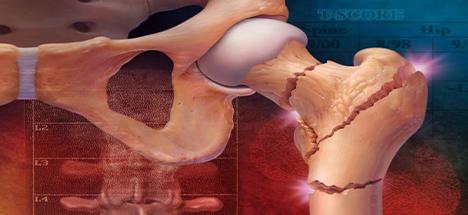Why hip fracture is widely said to be the last fracture of life?
Winter is the prone period of fractures, which is related to the climate and weather characteristics of winter:
1、Because of the cold weather in winter, the blood vessels are constricted, the corresponding muscles and joints become stiff, and people's reactions to unexpected external events and accidents are relatively poor.
2、People wear more clothes in winter, and body's flexibility decreases. Unlike summer, you can immediately grab the objects around you or stabilize your body quickly. In addition, you often wear hats or helmets in winter which are easily to influence the eye vision. The risk of fracture increases.
3、In winter, the road is slippery after rain and snow, especially in mountainous areas and vegetable markets. The road is often frozen, which is prone to accidents.
Doctors remind: elderly people are more likely to fracture in winter than young people
On the one hand, bloated clothing, and the occurrence of degenerative lesions in various organs of the elderly, increased organic disease, slow action, slow response, vision and hearing loss, the elderly are more likely to fall, leading to fractures.
On the other hand, the sunshine duration in winter is short, and the elderly reduce outdoor activities due to cold protection, resulting in insufficient ultraviolet radiation and insufficient vitamin D synthesis.
Coupled with lack of muscle exercise, blood circulation in bones is reduced, bone calcium is easily sucked out, aggravating the process of osteoporosis, reducing bone strength and stiffness, a slight bump will easily cause fractures.
Last fracture in life?
Some people say that the hip fracture is the last fracture in life for seniors. Is this true?
Fractures easily occur in the wrist, shoulder, hip, spine, etc. For the seniors, the statement that hip fracture is the last fracture in life does exist.

Why do hip fractures have so many consequences compared to other parts?
1. The doctor introduced that the injury rate, disability rate and mortality rate of hip fractures in the elderly are very high.
2. After the injury, the elderly have walking problems, and bedridden for a long time, there will be many complications: bedsores, urinary tract infections, lung infections, decreased heart and lung function, osteoporosis ... These will seriously affect the health of the elderly.
Why is bedridden for a long time, which can cause complications like lung infections that seem to be out of reach?
Inability to move for a long time will affect the timely discharge of lung secretions and sputum, resulting in lung infection or pleural effusion. After the infection is aggravated, the whole body is weak, which affects other organs, and severely causes respiratory failure.
First aid after a fracture
Don't get up immediately after falling
1. First, judge whether your consciousness is clear, whether your joints can move freely, whether there is bleeding, and whether there is incontinence in the stool.
2. Properly move your body and not get up. If you can't get up on your own, look for someone around you or call 120 immediately for help.
Properly fix the injured limb
1. For example, to securely and temporarily fix the injured limb, the range of fixation should exceed the upper and lower joints.
2. This can avoid further damage to the fractured soft tissue, blood vessels, nerves or internal organs during the removal process, reduce the pain of the injured, and help prevent shock, and also facilitate the transportation of the injured.
3. Of course, you should avoid moving the wounded too much, so as not to aggravate the illness or increase the suffering of the wounded.
4. Fixing materials should be taken locally. Branches, sticks, boards, etc. are suitable for plywood.
5. In the absence of external fixation materials, temporary self-fixation can also be performed, such as binding the injured upper limb to the upper torso, or binding the injured lower limb with the healthy limb.
Hemostasis
1. For most wounds, hemostasis can be done after compression and bandaging; if it is bleeding from large blood vessels, a tourniquet is ligated near the wound, and the time to start the tourniquet is recorded in time.
2. If the fracture end pokes out the wound and is contaminated, it should not be immediately reset, so as not to bring dirt into the depth of the wound; the fracture end can be reset after debridement.
 简体中文
简体中文  English
English  日本語
日本語 